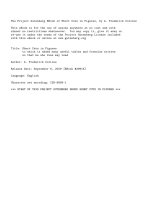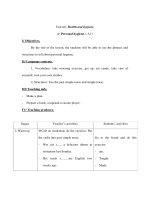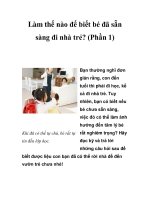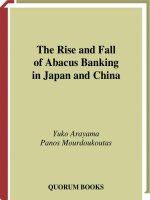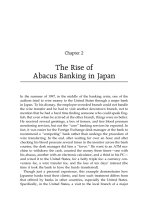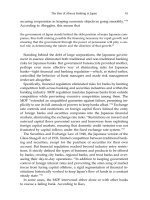The Rise and Fall of Abacus Banking in Japan and China phần 1 pdf
Bạn đang xem bản rút gọn của tài liệu. Xem và tải ngay bản đầy đủ của tài liệu tại đây (638.61 KB, 19 trang )
The Rise and Fall
of Abacus Banking
in Japan and China
Yuko Arayama
Panos Mourdoukoutas
QUORUM BOOKS
The Rise and Fall
of Abacus Banking
in Japan and China
The Rise and Fall
of Abacus Banking
in Japan and China
Yuko Arayama and
Panos Mourdoukoutas
QUORUM BOOKS
Westport, Connecticut • London
Library of Congress Cataloging-in-Publication Data
Arayama, Yuko, 1951–
The rise and fall of abacus banking in Japan and China / Yuko Arayama, Panos
Mourdoukoutas.
p. cm.
Includes bibliographical references and index.
ISBN 1–56720–324–8 (alk. paper)
1. Banks and banking—Japan. 2. Banks and banking—China. I. Title. II.
Mourdoukoutas, Panos.
HG3324.A753 2000
332.1'095121—dc21 99–046055
British Library Cataloguing in Publication Data is available.
Copyright ᭧ 2000 by Yuko Arayama and Panos Mourdoukoutas
All rights reserved. No portion of this book may be
reproduced, by any process or technique, without
the express written consent of the publisher.
Library of Congress Catalog Card Number: 99–046055
ISBN: 1–56720–324–8
First published in 2000
Quorum Books, 88 Post Road West, Westport, CT 06881
An imprint of Greenwood Publishing Group, Inc.
www.quorumbooks.com
Printed in the United States of America
TM
The paper used in this book complies with the
Permanent Paper Standard issued by the National
Information Standards Organization (Z39.48–1984).
10987654321
To Georgios and Michiko
Nature teaches us to pay little heed to what fortune brings,
and when we are prosperous to understand that we are un-
fortunate, and when we are unfortunate not to regard pros-
perity highly, and to receive unmoved the good things which
come from fortune and to range ourselves boldly against the
seeming evils which it brings; for all that many regard as good
or evil is fleeting, and wisdom has nothing in common with
fortune.
—Epicurus
Contents
Exhibits xi
Preface xv
Acknowledgments xix
1. Beyond Non-performing Assets: Abacus Banking 1
I. The Rise and Fall of Abacus Banking and the Banking
Crisis in Japan 17
2. The Rise of Abacus Banking in Japan 19
3. The Fall of Abacus Banking in Japan 53
4. The Banking Crisis 73
II. The Rise and Fall of Abacus Banking and the Looming
Banking Crisis in China 99
5. The Rise of Abacus Banking in China 101
6. The Fall of Abacus Banking in China 127
7. The Looming Banking Crisis in China 145
x Contents
8. Conclusions 163
Selected Bibliography 171
Index 179
Exhibits
1.1 Non-performing Loans for Selected Japanese Banks in 1998 3
1.2 Assets Managed per Bank Worker in Japan, China, and the
United States (1981–1998) 9
2.1 Economic Plans: Fiscal Years, GNP Growth Target, and Average
Annual GNP Growth Achieved (1956–1992) 23
2.2 Real GNP Annual Growth in Major Industrial Countries (1960–
1987) 24
2.3 Asset Accumulation and Financial Intermediation in Japan and
the United States (1954–1988) 26
2.4 Indirect Financing Ratio (1954–1988) 27
2.5 Bank Deposits in Japan (1960–1996) 28
2.6 Bank Loans in Japan (1960–1996) 30
2.7 Bank Loans in the United States (1980–1995) 31
2.8 International Comparison of Bank Profitability 38
2.9 Gosou-sendan Houshiki 43
2.10 Bank Assets, Economic Growth, and Gosou-sendan Houshiki 44
3.1 Exchange Rate (1981–1996) 58
3.2 Financing Ratio of Non-financing Firms (percent, 1975–1989) 60
3.3 Interest Rate Spread (1980–1996) 61
3.4 Employment and GDP by Sector in 1995 64
xii Exhibits
3.5 Japan’s Broad Money Supply Growth 66
3.6 Average Tariff Cuts Achieved in the Uruguay Round for
Industrial Goods 67
3.7 Real GDP Annual Growth in Major Industrial Countries for
Selected Periods 68
3.8 The Disbanding of Gosou-sendan Houshiki 70
4.1 The World’s Ten Largest Banks (1982–1998) 75
4.2 Standard & Poor’s Long-Term Issue Credit Ratings (1991–1998) 76
4.3 Standard & Poor’s Bond Ratings (1986–1997) 77
4.4 Loans Outstanding by Industry (1975–1995) 81
4.5 Bank Deposits, Loans, and GDP (1960–1994) 83
4.6 Production Capacity and Operating Rate (1981–1996) 86
4.7 Purchase versus Sale Value of Selected Japanese Investments 88
4.8 Banks’ Latent Profits 89
4.9 Bank Net Loans in Japan (1960–1996) 91
4.10 Bank Net Loans in the United States (1980–1995) 92
4.11 Unemployment Rate (1975–1996) 94
4.12 Japan’s Domestic Wholesale Price Index (1981–1996) 95
4.13 Japan’s Labor Productivity (1960–1996) 96
5.1 Foreign Direct Investment in China (1983–1997) 109
5.2 Foreign Trade in China (1950–1995) 110
5.3 Real GDP Growth in China (1952–1996) 111
5.4 Financial Organization in China 112
5.5 China’s Savings (1991–1995) 114
5.6 Bank Loans in China (1980–1997) 115
5.7 Bank Loans in the United States (1980–1995) 116
5.8 Bank Assets (1980–1997) 118
5.9 Financial Assets Distribution (1986–1994) 120
5.10 Bank Deposits in China (1980–1997) 121
5.11 Bank Deposits in the United States (1980–1995) 122
6.1 U.S. Trade Deficit with China (1985–1997) 130
6.2 U.S. Demands on China 131
6.3 China’s Export Unit Value (1985–1996) 134
6.4 Foreign Direct Investment in China (1995–1997) 136
6.5 China’s Trade (1992–1997) 137
Exhibits xiii
6.6 Real GDP Growth (1994–1999) 138
6.7 SOE Profits (1994–1998) 139
6.8 Credit Funds Balance Sheet of State Bank User Funds in 1997 140
6.9 Money Supply of China (1977–1995) 141
7.1 Selected Bank Downgrades as of October 15, 1998 147
7.2 Moody’s Credit Rating for Selected ITICs 148
7.3 Debt-to-Equity Ratios of the Mainland Parents of Some
Prominent Hong Kong ‘‘Red Chips’’ as of December 31, 1997 149
7.4 Corporations that Missed Bond Payments in 1999 150
7.5 Government Revenues, Expenditures, and Debt Incurred (1970–
1995) 152
7.6 Bank Net Loans in China (1980–1997) 154
7.7 Bank Net Loans in the United States (1980–1995) 155
7.8 Production, Employment, and Establishments in the
Construction Sector in China (1981–1996) 157
7.9 Annual Growth Rate of Loans in State-Owned Banks by Region
(1990–1994) 160
Preface
Complacency is dangerous, especially in a rapidly changing world. For
decades, Japanese bankers were complacent with a rapidly growing
economy and with cozy relationships with government bureaucrats who
pursued policies that virtually eliminated traditional banking risks.
Rapid economic growth, for instance, provided a steady flow of deposits,
which in turn financed corporate expansion. Rapid economic growth fur-
ther fueled corporate profits and asset inflation that made the repayment
of loans almost a certain bet. But what did make the repayment of loans
a certain bet was Japan’s industrial policy and tight regulation as prac-
ticed by the Ministry of International Trade and Industry (MITI) and the
Ministry of Finance (MOF), especially policies bailing out declining in-
dustries and limiting competition among banks.
In addition, Japan’s government regulators directly controlled the
Postal Savings, a government agency, and monitored closely the day-to-
day operations of private banks, in essence controlling the behavior of
bank managers. In this sense, Japanese banking replicated more the
banking of the former socialist countries, where managers were ap-
pointed by government bureaucrats and rationed credit according to the
priorities of central planning, and less the banking of market economies,
where credit is allocated according to the principles of risk management.
Complacency is not confined to Japanese bankers alone. It extends to
Chinese bankers, too, if one can talk about Chinese bankers in the market
xvi Preface
meaning of the term. Under communist rule, Chinese ‘‘bankers’’ have
been complacent with government ownership and interest rate controls
that turned banking into a government department, an instrument of
central planning. Since 1978, Chinese bankers have also been complacent
with economic growth, asset appreciation, and government protection
that ‘‘eliminates’’ traditional banking risks. Their function is limited to
that of government accountants that ration credit according to central
planning priorities rather than according to the principles of risk man-
agement.
Unconcerned with risk and under tight bureaucratic supervision and
control, Japanese and Chinese bankers grew up as abacus bankers, as
record keepers of money flows, deriving income from seigniorage, from
the passive creation of money through interest-bearing loans rather than
from true banking, and from active asset management.
1
In this capacity,
banks behave more as welfare agencies that keep afloat inefficient and
ineffective corporations, providing employment and income for their em-
ployees and supporting community needs, and less as banks in the true
meaning of the term. Japanese managers by nature and Chinese man-
agers by social rule are also driven by a herd mentality, moving collec-
tively from one direction to another, causing wild asset price fluctuations
that manifest themselves into financial crises. This was particularly true
in the late 1980s for Japan and in the early 1990s for China. Japanese and
Chinese bankers invested in overvalued real estate, equities, art, and
other objects of speculation—assets that they shouldn’t have invested in
under the basic principles of risk management.
Unfortunately for both Japan and China, rapid economic growth did
not last forever; neither did the cozy relations with government bureau-
crats. By the late 1980s in Japan and by the mid-1990s in China, economic
growth slowed down, global competition intensified, asset values col-
lapsed, and government regulation was partially lifted, especially in Ja-
pan. As a result, both Chinese and Japanese bankers found themselves
with piles of non-performing assets, scores of competitors invading their
home turf, and a tough task to reckon with—learning to behave as true
bankers (i.e., how to manage traditional and non-traditional risks).
Arguing this hypothesis, this book claims that, though necessary, an
American-style rescue package that cleans the balance sheets of Japanese
and Chinese banks is not sufficient to solve the banking woes of the two
countries. To be sufficient, any rescue package must set the parameters
for true banking (i.e., bank managers must be afforded the opportunity,
freedom, and incentives to run banks as for-profit businesses rather than
Preface xvii
as welfare agencies). Bank managers must further escape the abacus
mentality and learn how to use their brains rather than their fingers.
They must shift from abacus banking to credit risk management, and
that may take much longer than anxious Western observers would have
expected.
NOTE
1. Originally, seigniorage (or seignorage) was the sovereign right of a lord or
a government to issue money, which in essence was a form of implicit taxation,
and therefore a source of income. The size of such income depended upon the
difference between the intrinsic and the monetary value of the monetary instru-
ments. Later on, seigniorage was also transferred to banking institutions that
could create money through the conventional principle of money multiplier.


